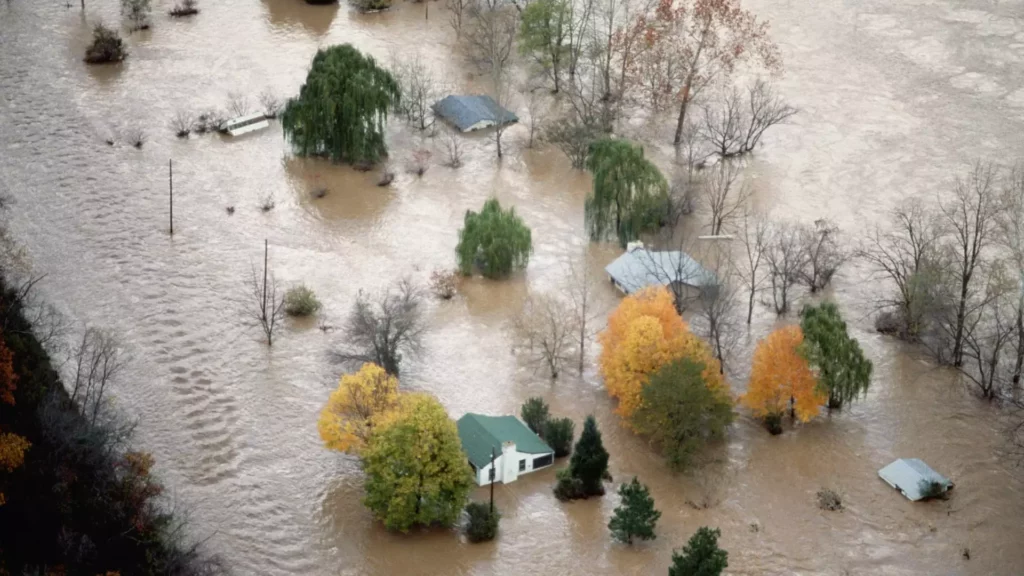![]()
Just an inch of floodwater can generate tens of thousands of dollars in property damage. Homeowners trying to move and start over after such a disaster might find a surprising buyer for their home: the government. The Federal Emergency Management Agency, or FEMA, has spent around $4 billion assisting in the purchase of about 45,000 to 50,000 damaged homes since 1989, according to A.R. Siders, director of the University of Delaware’s Climate Change Science and Policy Hub, who analyzed FEMA’s data in 2019. These homes have been marred by floods to the point where the homeowners decide to move away. To encourage homeowners not to sell to new buyers and stop what Siders calls “that terrible game of hot potato,” FEMA’s Hazard Mitigation Grant Program supports local and state governments in purchasing the homes, demolishing them and turning the property into public land, in what are called floodplain buyouts.
A Real-Life Example
Andrea Jones, 59, sold her home in the Charlotte, North Carolina, area in a floodplain buyout. Jones, who works in the wealth and investments department of a bank, purchased her home in 2006 for $135,000. Her home was appraised in 2022 at a value of $325,000. Jones said her home never flooded but her street did. “Within three years of me being in the house was the first time I experienced the heavy flooding. It came up to my mailbox,” Jones said. “You could not see the street. You could not see the beginning of my driveway.”
Commuting to her home, which was not in a flood zone when she bought it but was later rezoned into one, made her worry. “At times when I would be at work and it’d be raining really hard and I’d be like, am I going to be able to get home? Am I going to be able to get to my house? Am I going to have to park my car up the street?” she said. “It just didn’t happen a lot. But when it did happen, it was scary.” Jones put the proceeds from the sale toward the purchase of a new home, which she said is nicer, for $437,000. Since the home is more expensive and interest rates are higher, Jones said, her monthly mortgage is double what it once was. Her new home is outside the floodplain and about a 10-minute drive from her former neighborhood. “I miss the neighborhood; I miss my friends,” she said. “I miss seeing people walking their dogs, standing out, talking with them, having conversations … things like that.”
However, buyouts as a strategy can be controversial, experts say. “It’s a bit of a mixed bag. I think in some cases they’re successful and in some cases they’re not,” said Mathew Sanders, senior officer for U.S. conservation at Pew Charitable Trusts. Sanders said some communities may be apprehensive about taking on the responsibility of the deeded land. “There’s legal liability associated with owning property generally, and so it ends up, in some cases, being a fairly significant drain on local resources,” he said. The Congressional Research Service found that, without full participation, floodplain buyouts can also lead to problems such as blight, community fragmentation, difficulty with municipal services and inability to restore the floodplain to be able to properly absorb water. Of course, a buyout can be a huge advantage for a person who does not want to live in a floodplain but may not have the resources to abandon their home. Even so, the buyouts can take a long time. On average, federal buyouts can take two to five years, though 80% of the FEMA acquisitions are approved in less than two years.
How long the buyout takes often depends on which program is funding the buyout. In addition to FEMA, the U.S. Department of Housing and Urban Development and many state and local communities fund floodplain buyouts. And all of this is happening as the U.S. is facing a housing shortage of at least 7.2 million homes, according to Realtor.com. “We’re talking about a crisis of affordability in housing across the country, combined with the crisis of the climate change effects. How do we ensure that we provide for our population while making sure that they’re not in harm’s way?” asked Carlos Martín, director of the Remodeling Futures Program at the Joint Center for Housing Studies of Harvard University.
Floodplain buyouts can have both positive and negative implications for homeowners and communities. While they provide a way for individuals to move out of harm’s way and create open spaces for flood protection, they can also raise challenges such as legal liabilities and community fragmentation. Moving forward, it is essential to carefully evaluate the outcomes of floodplain buyouts and consider innovative solutions to address the housing shortage while ensuring the safety of individuals in flood-prone areas.

Leave a Reply